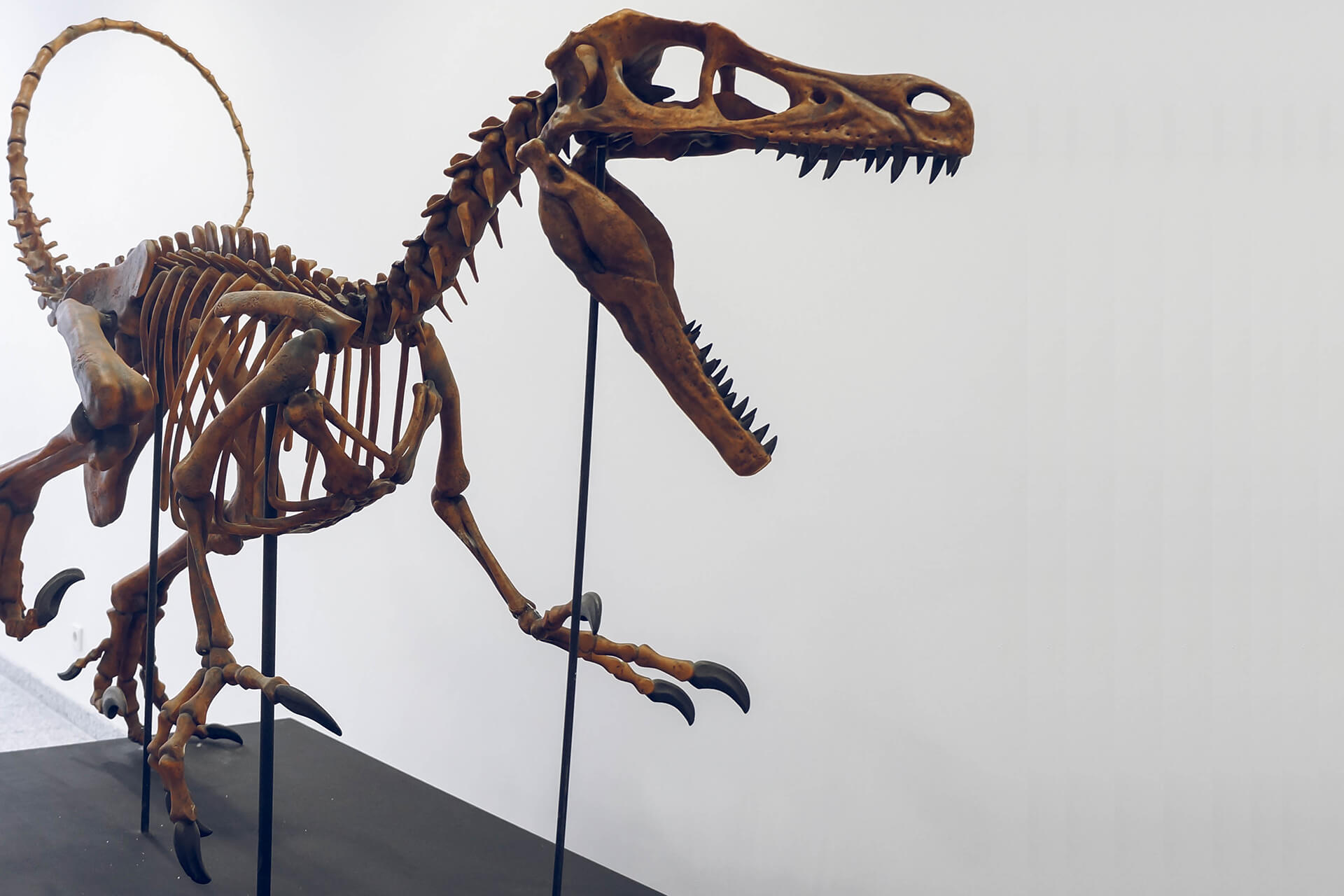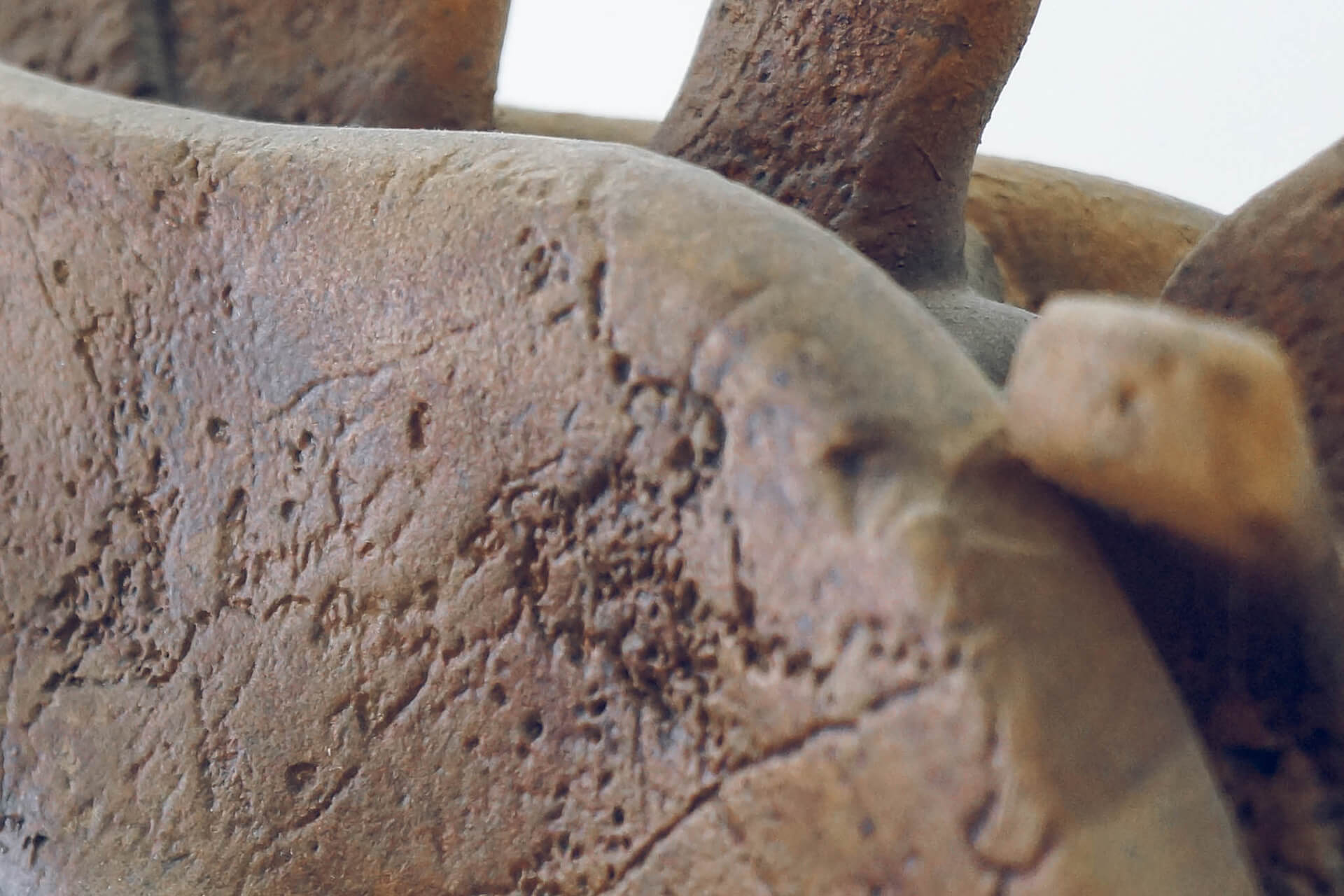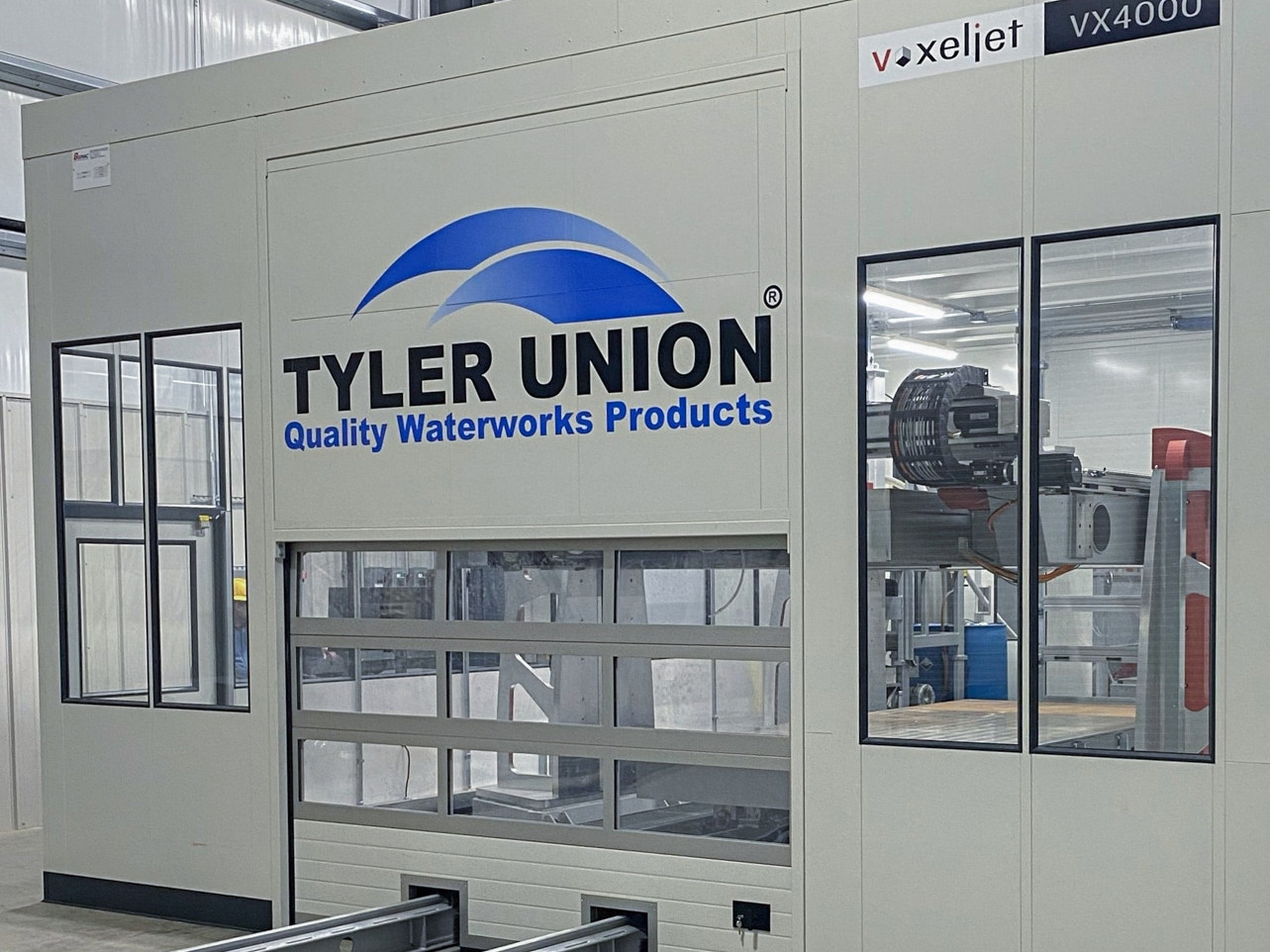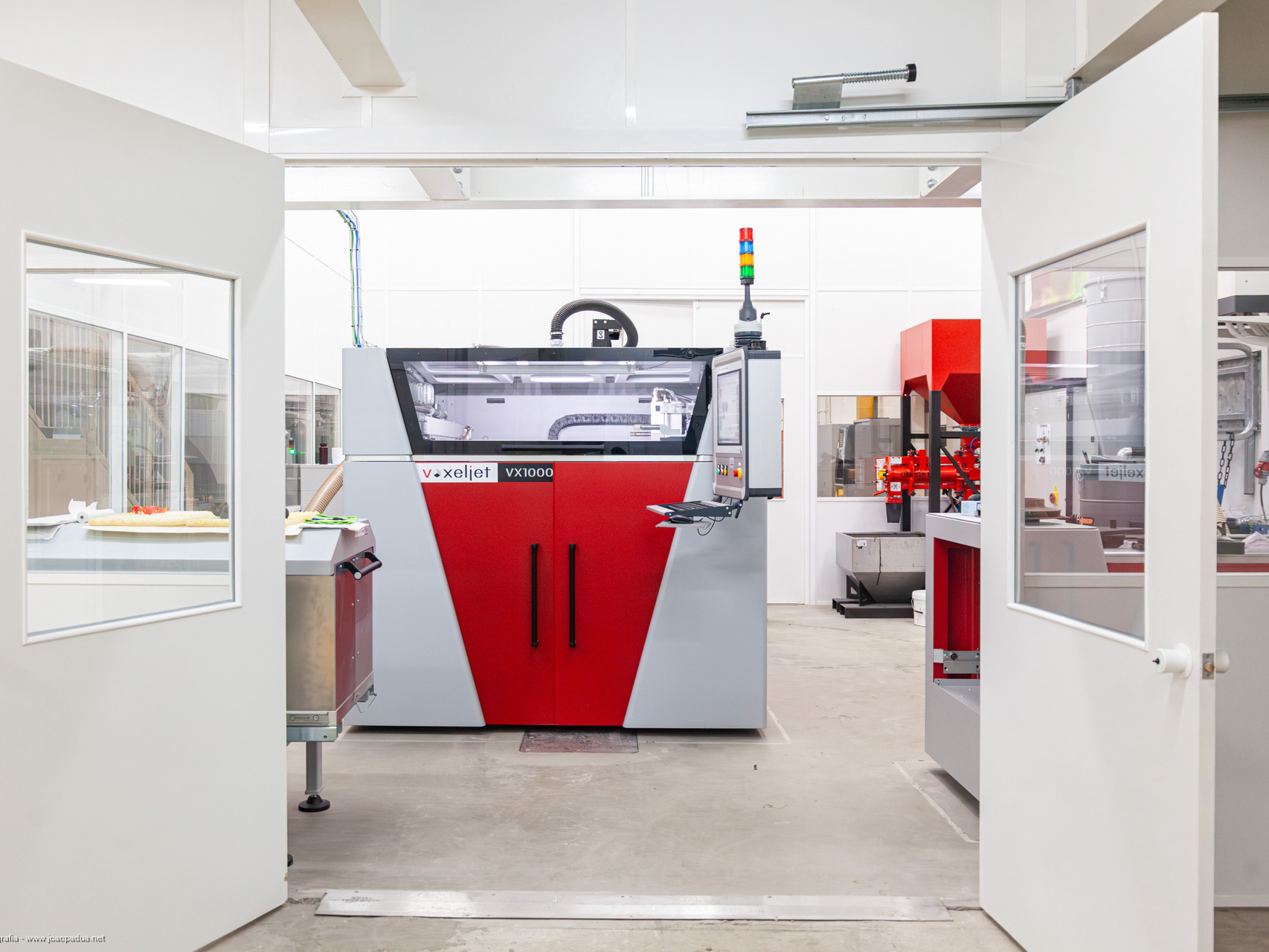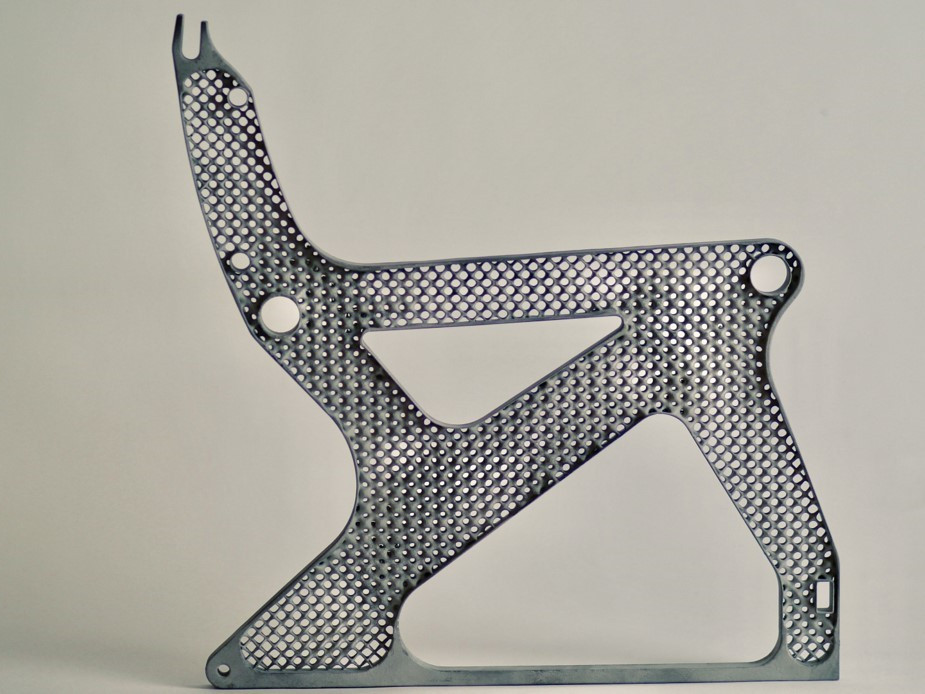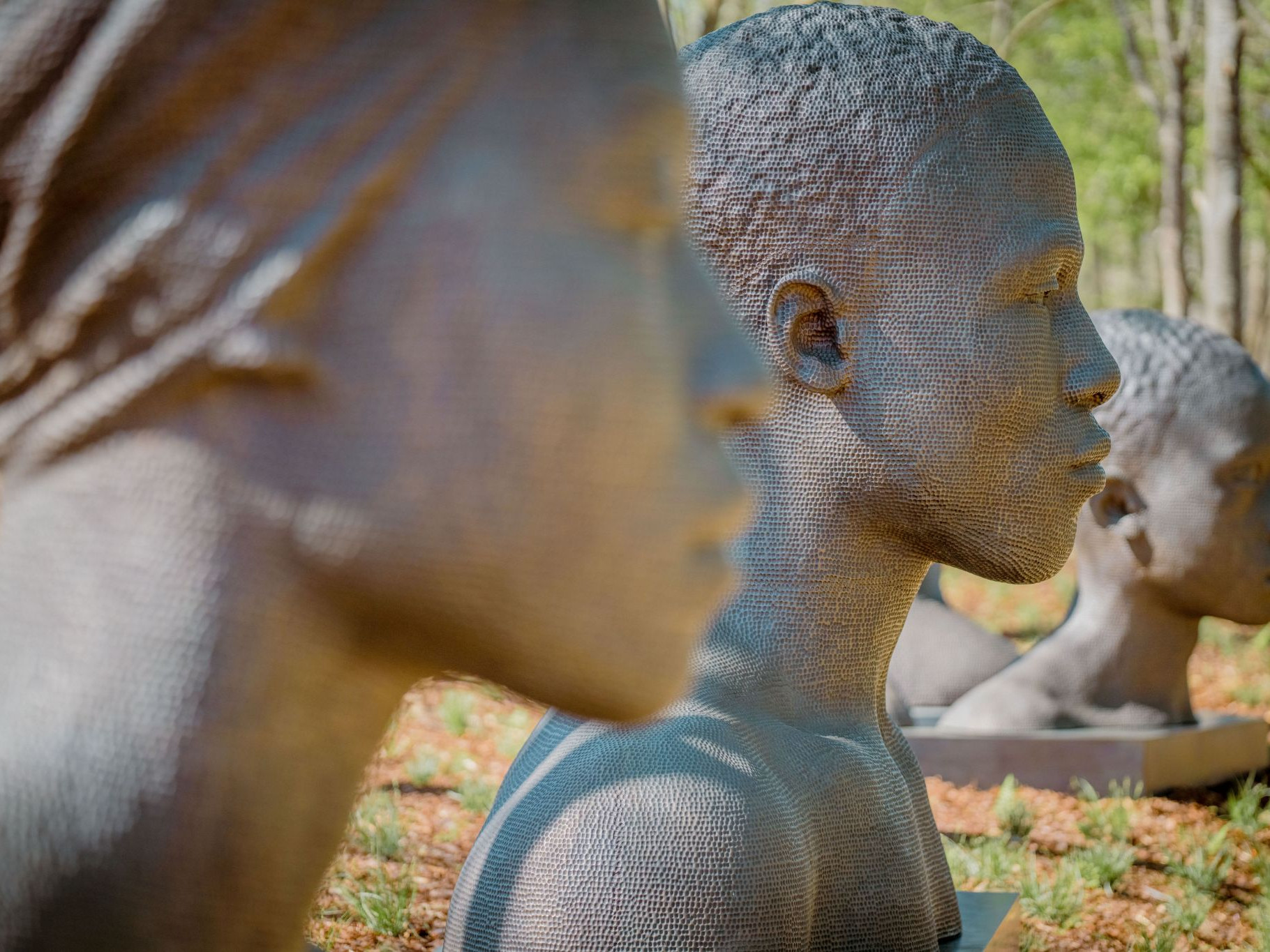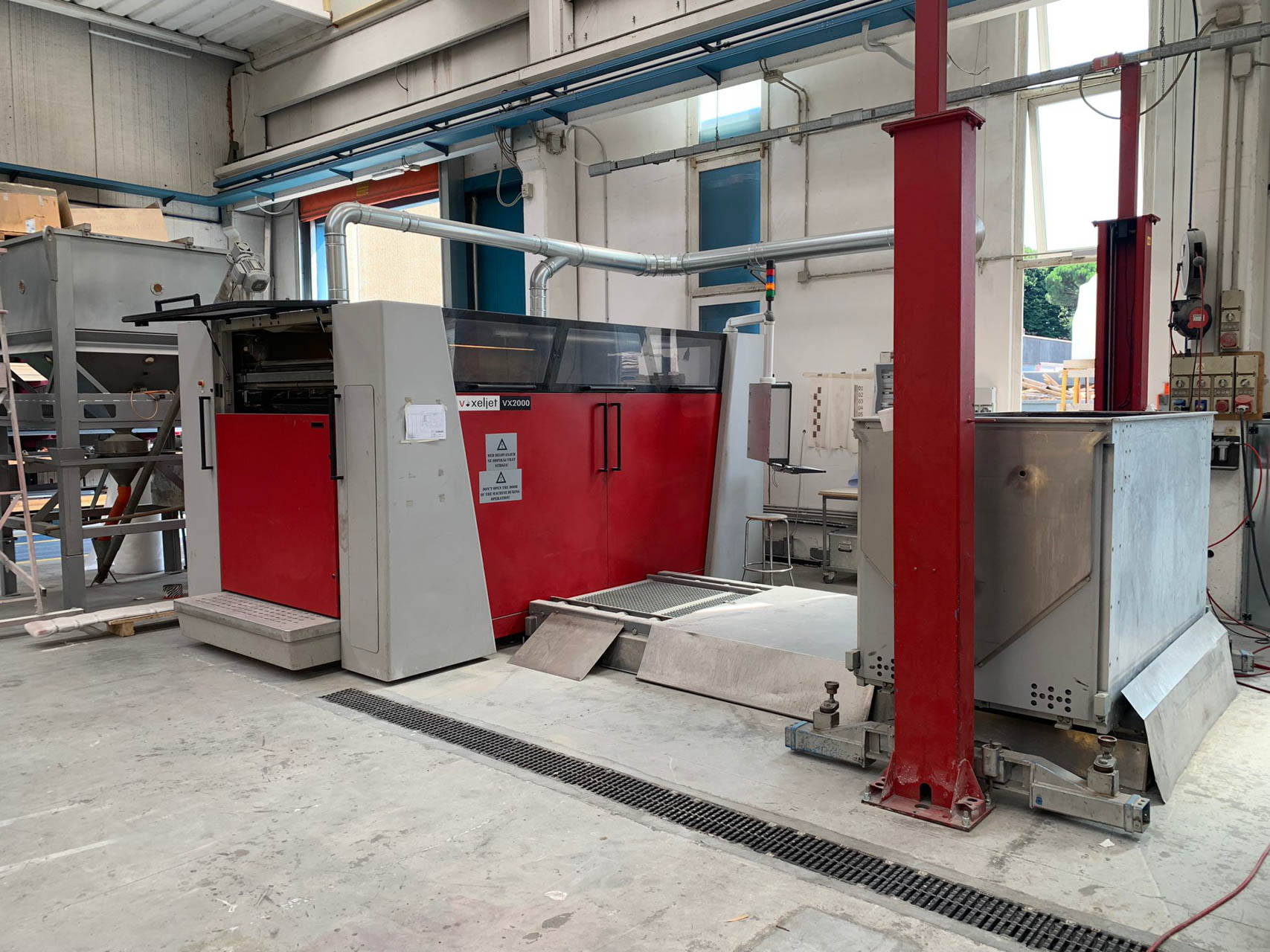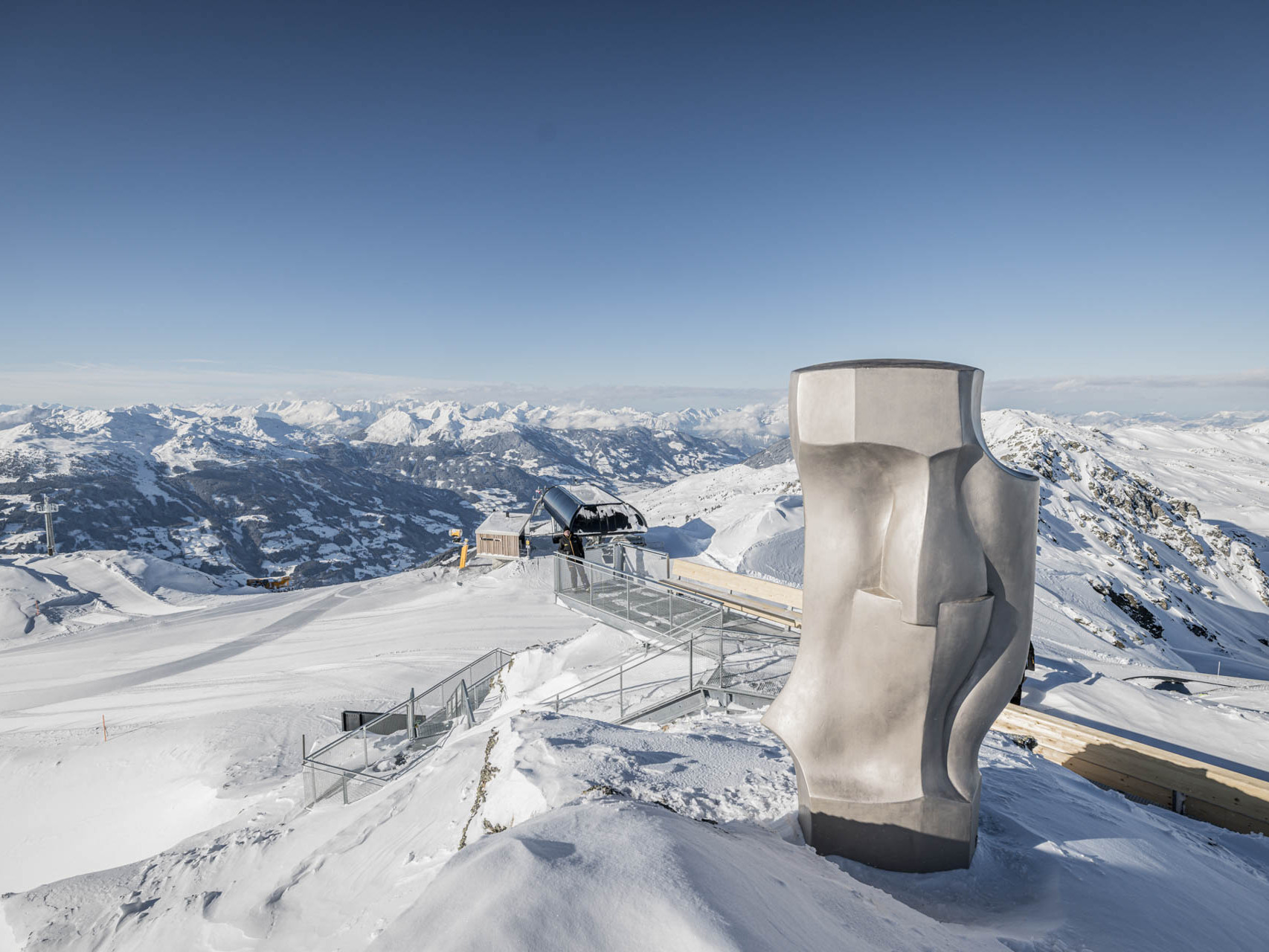- Home
- Case Studies
- Art and Design
- Dinosaur Skeleton from the 3D Printer
True to original 3D printed dinosaurs from 3D printer
An original, reproduced and inexpensive dinosaur skeleton within a few days. Designers, model builders and restorers are often faced with the challenge of turning computer animations into exact physical models.
Two practical examples from the field of prehistoric research demonstrate how tasks of this kind can be managed with ease using voxeljet’s 3D printing method. While years ago 3D printing was primarily used in the more traditional industries such as machine building, automotive industry and aviation, users from other industry segments are now following suit.
Application cases from the world of art and archeology are becoming more common at our 3D printing service center. The reason is obvious: there is no simpler method for duplicating rare finds and for reconstructing or generating historic temples, statutes or skeletons than 3D printing.
Tobias King, Director Marketing & Applicationvoxeljet AG
voxeljet’s 3D Parts On-Demand service centers are prepared for the requirements of this client base. Different industrial printing systems can be used to print out parts or complete models of almost any size based on the division of molds.
It even makes easy work of the reconstruction of dinosaur skeletons for scientific purposes. Two prehistoric giants, the Velociraptor and the Stegosaurus, have already come to life on voxeljet printers.
Eight working days to a dinosaur skeleton
A project from dinosaur research, a 3.66 meter long Velociraptor skeleton, proves just how quickly, easily and efficiently such models can be reproduced. In the first step, the existing skeleton parts were scanned to obtain the CAD data sets required for printing. The bones, which were divided into nine categories, could then be arranged into a complete skeleton using animation programs.
It took approximately three days to print out the bones on the voxeljet printers. They were then infiltrated with epoxy resin to increase the stability of the true-to-detail printed plastic parts. To create an even better impression of the skeleton, the experienced film and stage prop experts at Propshop Productions Limited then paint brushed the parts. In the last step, the individual parts were mounted on a previously constructed steel frame, which forms the backbone of the model, so to speak. The entire project took only eight working days to complete.
Experience with "Prehistoric projects"
This is where experience from a previous dinosaur project paid off. Propshop Productions Limited had already duplicated a skeleton of a Stegosaurus (which was discovered in Wyoming (US) in 2005) on behalf of the London Natural History Museum. The 5.6 meter x 2.9 meter exhibit now occupies a place of honor in the museum’s Earth Hall. The model is the world’s most complete skeleton, which offers scientists an excellent opportunity to investigate the secrets of this dinosaur species.
By combining the modern technologies of scanning and 3D printing, it is now possible to duplicate objects more easily, rapidly and economically than ever. At the last stage, the powder-based parts can be easily colored and finished. In fact, the produced plastic models can also be used for investment casting, i.e. for the manufacture of individual cast parts. These possibilities open up new application areas for our Binder Jetting 3D printing method every day.
Tobias King, Director Marketing & Applicationvoxeljet AG
Natural history museum - Secrets of the Stegosaurus skeleton
Follow the arrival of the world’s most complete stegosaurus skeleton and the first months behind the scenes of the museum, where it was subjected to rigorous scientific research. The unprecedented specimen arrived at the museum in late 2013, but before it was presented to the public, our dinosaur researchers wanted to get their hands on it.
Prof. Paul Barrett and Dr. Charlotte Brassey took incredibly detailed measurements of the skeleton using laser scans, CT scans and 360-degree photography. By creating 3D models and analyzing all the data they have collected, they hope to answer some of the big questions about the anatomy and life of the stegosaurus.
Further Case Studies
VX4000 expands foundry and business capabilities in water works
By installing a VX4000 3D printer into their new foundry, waterworks specialist Tyler Union not only reduces tooling costs drastically but also positions itself as a forward thinking industry leader.
3D printing for sand casting in Portugal
CINFU is a Portugal-based training and innovation centre for the foundry industry. With a VX1000 3D printer in house, CINFU is gaining significant adaptive advantages for the foundry industry.
Weight reduction through 3D printing: lightweight seats for the aircraft industry
Lightweight seats produced using 3D printing can reduce costs and emissions in the aircraft industry.
Bronze-cast sculptures produced with 3D printing
In the Freedom Monument Sculpture Park, there are three bronze sculptures by artist Shaleigha D'Clark, created using 3D printing
Lanulfi Models optimizes mold making with VX2000
The integration of voxeljet’s VX2000 has redefined Lanulfis approach to metal casting. It offers significant reductions in lead times and enhances design capabilities.
3D-printed sculptures at 2500 metres
At 2,500 metres in the Tyrolean Alps, these 3D-printed sculptures enjoy a special view. They are the fulfilment of a long-held dream of Tyrolean artist Magnus Pöhacker.
3d printed joysticks for tractors and machines
For Lindner Traktorenwerke, 3D printing is already an alternative to injection molding. For example, for customized joysticks and control elements for their tractors.
3D Printing Solutions
Would you like to learn more about voxeljet and 3D printing? Click here for the entire voxeljet solution portfolio.



















